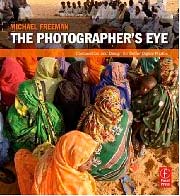 To be honest, reading any kind of book about the legal aspects of photography—from taxes, to corporate structures, to copyright laws, to government regulations—not only makes me want to never shoot another image, it also brings out a seething, anarchic, vigilante side of me. I suddenly feel like hurling bombs at government buildings and torturing IRS agents with a cattle prod. This is probably wrong, but I suspect I’m not alone in this reaction.
To be honest, reading any kind of book about the legal aspects of photography—from taxes, to corporate structures, to copyright laws, to government regulations—not only makes me want to never shoot another image, it also brings out a seething, anarchic, vigilante side of me. I suddenly feel like hurling bombs at government buildings and torturing IRS agents with a cattle prod. This is probably wrong, but I suspect I’m not alone in this reaction.
After all, most of us take up photography because we are artists at heart. If we were interested in tax laws or the differences between S-Corporations and C-Corporations we would have gone to business school or law school. You might even say that we incline toward photography precisely to the degree that we hate that kind of stuff.
So I suppose we ought to be grateful that there are people like Carolyn Wright, who is both a practicing attorney and a professional photographer, and who has written a guide to help the rest of us navigate the legal swamps that surround the business of photography. (more…)

